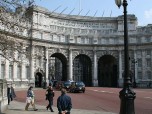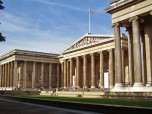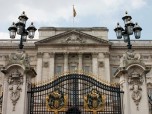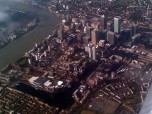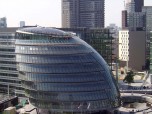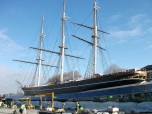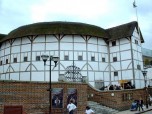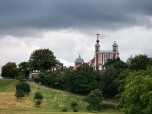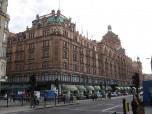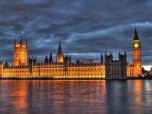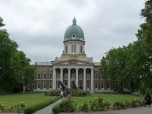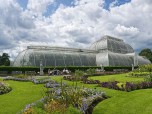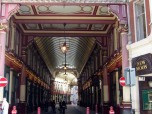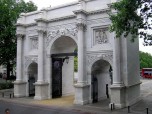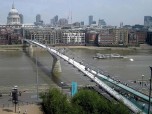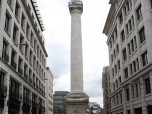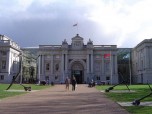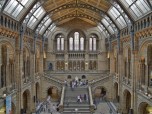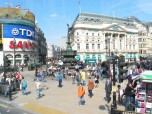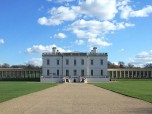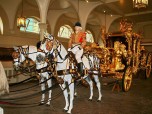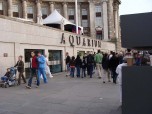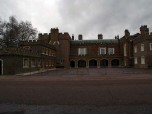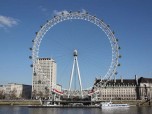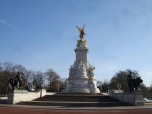Upon the death of the Prince Consort in 1861, Queen Victoria embarked on a frenzy of building monuments to his memory. One of the most popular structures she had built was Royal Albert Hall. Situated in front of the Albert Memorial in South Kensington, this concert hall was designed by Naval engineers who were inspired by classical Roman architecture. Royal Albert Hall’s unusual design probably saved it during World War II, as German pilots used it as a landmark.
Origins
Royal Albert Hall is an oval shaped building whose exterior is encircled by a frieze that shows the triumph of Arts and Letters. The frieze shows people engaged in such occupations as stone work, wood and brick work, architecture, music, painting, sculpting, agriculture, horticulture, astronomy, navigation, engineer, pottery and glassmaking. It also depicts philosophers, artists, princes, students and sages. The frieze was made by the Ladies’ Mosaic Class at the Victoria & Albert Museum.
The building is made of brick with terra cotta embellishments made by the Gibbs and Canning Limited company. The Hall also has semi-circular arches around the windows that echo the oval shape of the building. Inside, the Hall is dominated by an impressive glass and iron dome. The Hall also houses the Henry Willis Organ, which was once the largest organ in the world and is now the second largest organ in Britain with exactly 9,999 pipes. The Hall was at first lit by gas and was rather late in using electric lighting. An electric lighting system was not installed in the building till 1888.
Construction started in 1867 and was completed in 1871. Royal Albert Hall was designed by Captain Francis Fowke and Lieutenant Henry Scott of the Royal Engineers. It was built by the Lucas Brothers who were London based builders noted for building the Covent Garden Opera House and private houses like Cliveden. Fowke died before the building was completed and Scott completed the design. Fowke based the design on the Colosseum and the Dresden Opera House that was designed by Gottfried Semper. Before his death, Prince Albert had asked Semper to draw up plans for the Hall while Semper was in London during the Great Exhibition. The Exhibition was the brainchild of the Prince Consort and highlighted the industry, technology and art of the burgeoning British Empire.
About the Hall
Royal Albert Hall seats about 7,000 and was designed for scientific gatherings. Its acoustics were not really designed for musical presentations. Indeed, when it was being designed, the name of the building was the Hall of Arts and Science. Queen Victoria changed the name after her husband’s death. People noticed problems with the acoustics on the very day the building was opened as there was a concert after the opening ceremony. The problem with the acoustics was not solved until 1969 when fiberglass diffusing discs were hung from the ceiling. Major renovations were done on Royal Albert Hall between 1996 to 2004. These included reconstruction of steps and the addition and improvement of seating, including the Choirs and the Stalls. Carpeting was also updated.
Queen Victoria laid the foundation stone herself on May 20, 1867. The opening ceremony was held on March 29,1871, with the Prince of Wales presiding. Royal Albert Hall is listed as a Grade I building. This means that it is a building of exceptional historical or architectural interest. It is held in trust for the United Kingdom.
The Proms, or the Henry Wood Promenade Concerts, are held at Royal Albert Hall for seven weeks during the summer. Royal Albert Hall became the home of the Proms only in 1941 after the Queen’s Hall was bombed by the Germans. But Royal Albert Hall also hosts tennis matches, rock concerts, film premieres, circuses and business conferences. Among the notable people who have performed at Royal Albert Hall are Elgar, Rachmaninov, Wagner, Verdi, Frank Sinatra, The Beatles, Liza Minelli, The Who and others. Sports stars who’ve appeared at the Hall include John McEnroe, Muhammad Ali and various champion sumo wrestlers.
Statesmen and women who have visited Royal Albert Hall are Queen Elizabeth II, a direct descendant of Victoria and Albert, former Prime Minister Winston Churchill, the Dali Lama, President Bill Clinton and President Nelson Mandela.


